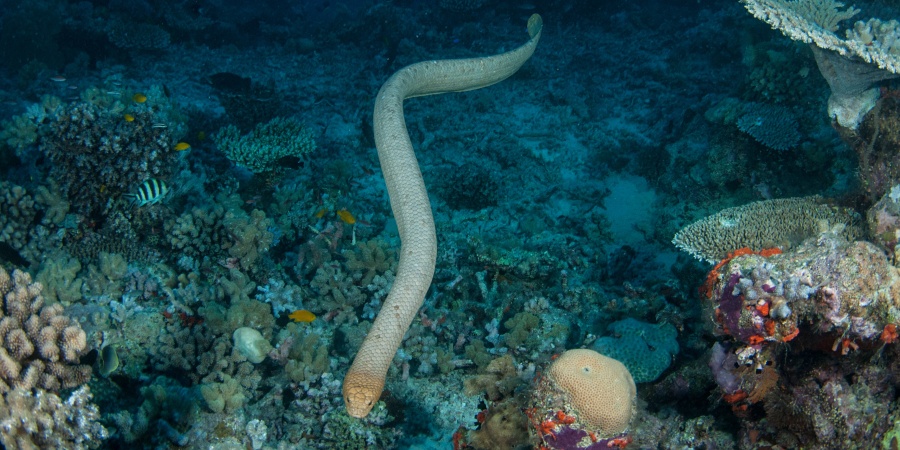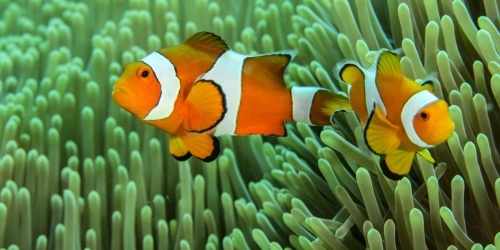
Sea Snake - Photo the Ocean Agency / Adobe
What is a sea-snake? Sea-snakes are cold-blooded reptiles, so they live mostly in warm tropical waters. Sea-snakes are fully adapted to breathe, feed, breed and grow in the sea. For air-breathing animals, sea-snakes are remarkable divers. Some species can dive to 100 metres or more, and remain submerged for up to 80 minutes. This may be partly due to the remarkable ability of some species to absorb part of the oxygen they need through their skins. Their nostrils have valves that close when they are underwater.
What do they look like? The 22 species of sea-snakes found in WA vary greatly in their colours and markings. They all, however, have nostrils on the top of the snout, a boat-shaped abdomen and a flat tail that acts as a paddle to help them swim more effectively.
Where do they live? Most sea-snakes live in the warm, shallow seas of the tropics and sub-tropics. Some inhabit muddy estuaries, while others show a liking for clear waters near reefs. Individuals of some tropical species are occasionally swept south by warm currents, but eventually perish in the cooler southerly waters. Sea-snakes are common in Shark Bay Marine Park, Ningaloo Marine Park, Montebello Islands Marine Park and Rowley Shoals Marine Park. The Shark Bay sea-snake (Aipysurus pooleorum) lives almost exclusively in the Shark Bay Marine Park. The yellow-bellied sea-snake (Pelamis platura) lives in the open ocean and sometimes washes up on beaches in the south-west.
What they eat and how: Sea-snakes inject venom with their bites to subdue and kill prey, which is then grabbed in the jaws and swallowed whole. As with other snakes, the skullbones of sea-snakes are loosely attached and they can dislocate their lower jaws and slide them sideways to allowing them to swallow very large prey. Sea-snakes tend to be fussy eaters. Some only eat catfish, another only eats the eggs of two families of fish. Others dine on eels, fish, prawns, crabs and worms.
Behaviour: Sea-snakes are quite curious and may approach people, but if you don't touch them they should leave you alone. Sea-snakes have been known to curl around divers' regulator hoses and limbs, especially during the breeding season (perhaps mistaking them for a female of their own kind). If this occurs, don't become alarmed, but wait patiently until they move off. Although sea-snakes are highly venomous, they are generally quite placid and rarely attack people unless provoked. Even if they do bite, they do not always release venom. As a precaution, however, never touch sea-snakes washed onto beaches, even if they seem dead. They may still be alive and lash out in alarm.
Breeding: Female sea-snakes sometimes attract attention from more than one suitor and mate in the open water. They give birth to live young at sea. The mother then leaves the young to fend for themselves.
Conservation status: No species of sea-snakes are listed as threatened, although the distribution and status of most species is not very well known.



























